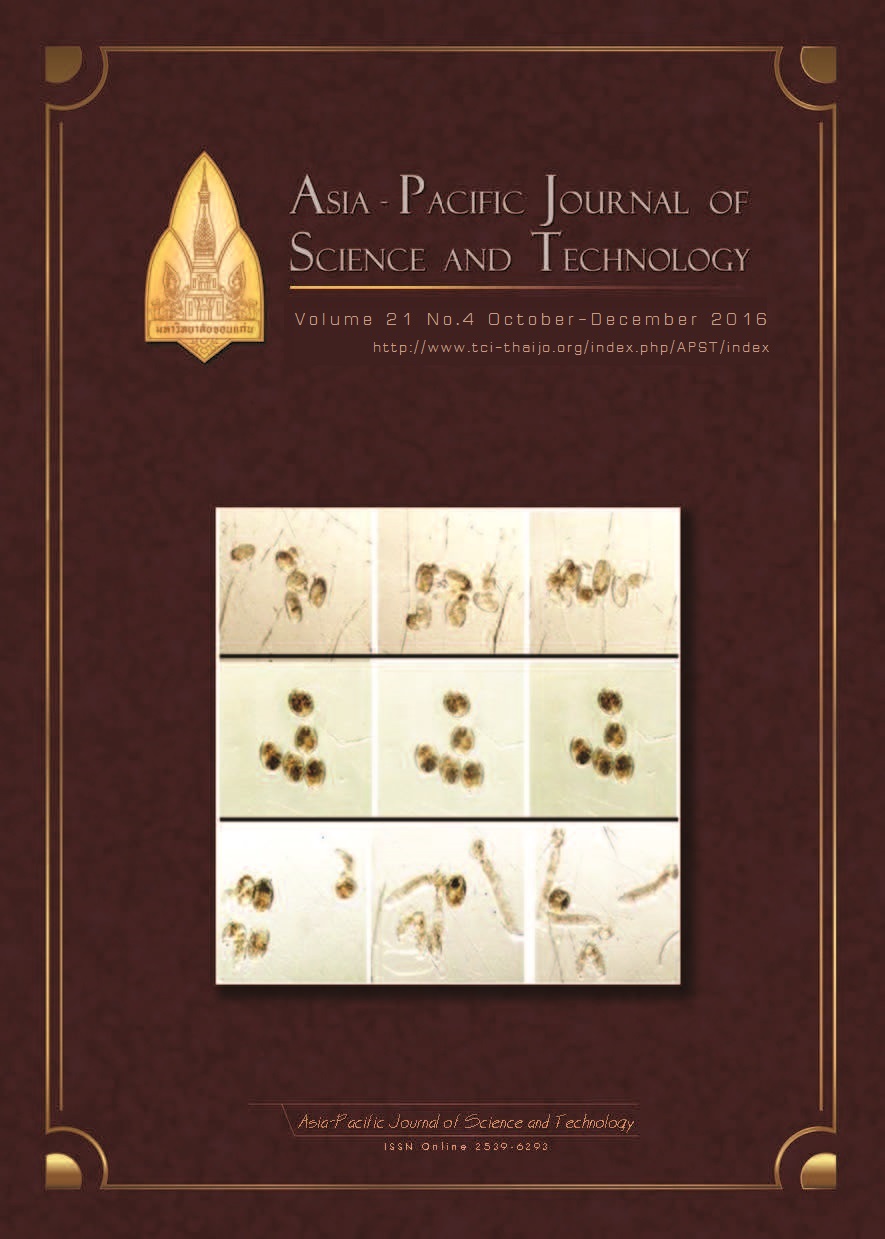Trends in temperature in Thailand from 1964 to 2013
Main Article Content
Abstract
Surface air temperature is one of the most important climate factors. Globally, minimum temperatures are increasing at a faster rate than maximum ones. In this study, Thailand’s trends in daily maximum surface air temperature (Tmax), minimum surface air temperature (Tmin), and the diurnal temperature range (DTR) from 1964 to 2013 were observed and interpolated. The results were compared with other studies and demonstrate that the trends in Tmax and Tmin are increasing, whereas the DTR is most often decreasing due to the increase of Tmin at a faster rate than that of Tmax. As surface air temperature changes can be seen as indicators of climate change, the findings indicate that Easter, Central and West Thailand appear to be the most impacted areas of Thailand over the past 50 years (1964-2013) regarding rapid surface air temperature changes. To further understand the changes in Thailand’s climate, trends in precipitation intensities should be evaluated.
Article Details
References
[2] Vose Russell S., Easterling David R., Gleason Byron, 2005. Maximum and minimum temperature trends for the globe: An update through 2004. Geophysical Research Letters 32.
[3] Easterling, D.R., Horton, B., Jones, P.D., Peterson, T.C., Karl, T.R., Parker, D.E., Salinger, M.J., Razuvayev, V., Plummer, N., Jamason, P., Folland, C.K., 1997. Maximum and Minimum Temperature Trends for the Globe. Science 277, 364–367.
[4] Solomon, S., 2007. Climate Change 2007 - The Physical Science Basis: Working Group I Contribution to the Fourth Assessment Report of the IPCC. Cambridge University Press. 714 p.
[5] Argson, S., 2010. Meteorological observations in Thailand. Final report of JMA/WMO workshop on quality management in surface, climate and upper-air observations in RA II (Asia), Tokyo, Japan.
[6] Dempster, A.P., Laird, N.M., Rubin, D.B., 1977. Maximum likelihood from incomplete data via the EM algorithm. Journal Of The Royal Statistical Society, Series B. 39, 1–38.
[7] Firat, M., Dikbas, F., Koç, A.C., Gungor, M., 2010. Missing data analysis and homogeneity test for Turkish precipitation series. Sadhana 35, 707–720.
[8] Schneider, T., 2001. Analysis of Incomplete Climate Data: Estimation of Mean Values and Covariance Matrices and Imputation of Missing Values. Journal of Climate 14, 853–871.
[9] Wang, X.L., Wen, Q.H., Wu, Y., 2007. Penalized Maximal t Test for Detecting Undocumented Mean Change in Climate Data Series. Journal of Applied Meteorology and Climatology 46, 916–931.
[10] Raj, B., Koerts, J. (Eds.), 1992. Henri Theil’s Contributions to Economics and Econometrics. Springer Netherlands, 345–381.
[11] Sen, P.K., 1968. Estimates of the Regression Coefficient Based on Kendall’s Tau. J. AM. STAT. ASSOC., Journal. American Statistical Association 63, 1379–1389.
[12] Mann, H.B., 1945. Nonparametric Tests Against Trend. Econometrica 13, 245-259.
[13] Kendall, M.G., 1948. Rank correlation methods. Oxford, England: Griffin.
[14] Limjirakan, S., Limsakul, A., 2012. Observed Trends in Surface Air Temperatures and Their Extremes in Thailand from 1970 to 2009. Journal of the Meteorological Society of Japan Ser II. 90, 647–662.


